How to Prioritize Customer Feedback Step By Step [+Top Methods]
Last updated on Wed Feb 05 2025
Customer feedback is a goldmine, but only if you know how to use it. Every SaaS product gets flooded with feature requests, bug reports, and user insights. The challenge? Figuring out which ones actually move the needle for your business. If you prioritize the wrong feedback, you waste time, drain resources, and frustrate users. If you do it right, you build a product that customers love and keep coming back to.
But let’s be real: Not all feedback is created equal. Some requests align with your roadmap, while others are distractions. You need a structured way to filter the noise and focus on what drives impact.
This guide walks you through a step-by-step framework for prioritizing customer feedback efficiently. We’ll cover the best prioritization frameworks, from RICE to Frill’s Priority Matrix, so you can turn insights into actionable product decisions. Let’s get into it because your product roadmap isn’t going to prioritize itself.
Step 1: Identify and categorize your feedback sources
Your users are constantly giving you feedback, whether you ask for it or not. Every support ticket, product review, and offhand comment on Twitter is a clue about what’s working (and what’s not). The problem? Feedback comes from everywhere, in all kinds of formats, and if you don’t have a system to collect and categorize it, you’re flying blind.
To build a truly customer-driven product, you need to centralize all this input. That means breaking down where feedback is coming from and organizing it in a way that makes sense for your team. Here’s where to start:
Different types of customer feedback
Surveys: NPS, CSAT, and feature request polls give structured insights
Support tickets: Bug reports and pain points from frontline customer interactions
Social media: Real-time sentiment analysis from platforms like Twitter, LinkedIn, and Reddit
Direct interviews: High-value qualitative insights from key customers and power users
Product analytics: Usage data that reveals feature adoption and friction points
Best tools for collecting and storing feedback
Frill: Centralized idea boards, feature voting, and prioritization tools
Zendesk & Intercom: Great for capturing support-driven insights
Hotjar & FullStory: Behavioral analytics to track how users actually interact with your product
Typeform & Google Forms: Quick and easy survey tools for direct customer input
Slack & Discord: Community-driven feedback straight from engaged users
Once you’ve mapped out where your feedback is coming from, the next step is structuring it so you can actually use it.
Step 2: Align feedback with company goals and strategy
Not all feedback deserves a spot on your roadmap A great product isn’t just built on what users want; it’s built on what actually moves the business forward. That’s why raw feedback needs to be filtered through the lens of your company’s strategy. If a request doesn’t align with your product vision, long-term goals, or revenue model, it’s just noise.
The key here is focus. Start by mapping feedback against your existing roadmap. Does it solve a core pain point? Will it increase retention, expansion, or acquisition? If not, it’s either a nice-to-have or a distraction. This is where prioritization frameworks come in handy (spoiler alert: we’ll get to those soon).
Finally, feedback shouldn’t live in a silo. Product, engineering, marketing, and customer success all have skin in the game. Cross-functional collaboration ensures that feedback is vetted from all angles—technical feasibility, business impact, and customer value—before making the cut.
Step 3: Organize and tag feedback for better visibility
Collecting feedback is easy, making sense of it is where things get messy. Without a system to organize and filter insights, your feedback backlog turns into a black hole of requests, complaints, and “wouldn’t-it-be-cool-if” ideas. The solution? Categorization and tagging. By structuring feedback properly, you make it searchable, actionable, and easy to prioritize.
How to categorize feedback effectively
Bugs: Anything breaking the user experience or causing friction
Feature requests: New capabilities users want (but may not actually need)
Usability issues: Small tweaks that improve workflow and efficiency
Performance concerns: Anything slowing down speed, responsiveness, or scalability
Optimizing with labels, tags, and automation
Labels & segmentation: Tag feedback by customer segment (enterprise vs. SMB), feature set, or urgency
Automated sorting: Use AI-powered tools to auto-categorize and rank feedback
Feedback integrations: Sync with tools like Frill, Jira, or Intercom to keep everything in one place
Once your feedback is structured, it’s time to apply prioritization frameworks to figure out what actually makes the cut.
Step 4: Apply prioritization frameworks to evaluate feedback
Not all feedback is created equal. Some ideas are game-changers, while others are distractions disguised as feature requests. Without a clear system for prioritization, you risk chasing requests that don’t move the needle or, worse, getting stuck in endless debates over what to build next. That’s where prioritization frameworks come in—they give you a structured way to evaluate feedback based on impact, effort, and strategic fit.
A solid framework eliminates the guesswork. It helps product teams focus on what truly matters: features that drive growth, improve retention, and align with long-term goals. Below are some of the most effective frameworks for turning raw feedback into actionable product decisions.
Common frameworks for prioritizing customer feedback
When you’re dealing with a constant influx of feedback, you need a system that helps you separate the must-build features from the distractions. Prioritization frameworks provide a structured way to evaluate feedback based on impact, effort, and strategic value. Instead of making gut decisions or playing feature request whack-a-mole, these frameworks ensure that every decision is backed by data and aligned with your product vision.
Each framework has its own strengths, depending on your goals. Some focus on balancing development effort with impact, while others help identify features that delight users. The key is choosing the one that best fits your team’s workflow and business objectives. Here are the top frameworks used by product teams:
Value vs. Effort Matrix: Helps teams identify quick wins by balancing customer impact with development effort. Low-effort, high-value features rise to the top, while resource-heavy, low-impact requests take a backseat.
RICE (Reach, Impact, Confidence, Effort): A scoring system that quantifies feedback by assessing how many users it affects, the potential business impact, confidence level in the data, and the effort required to build.
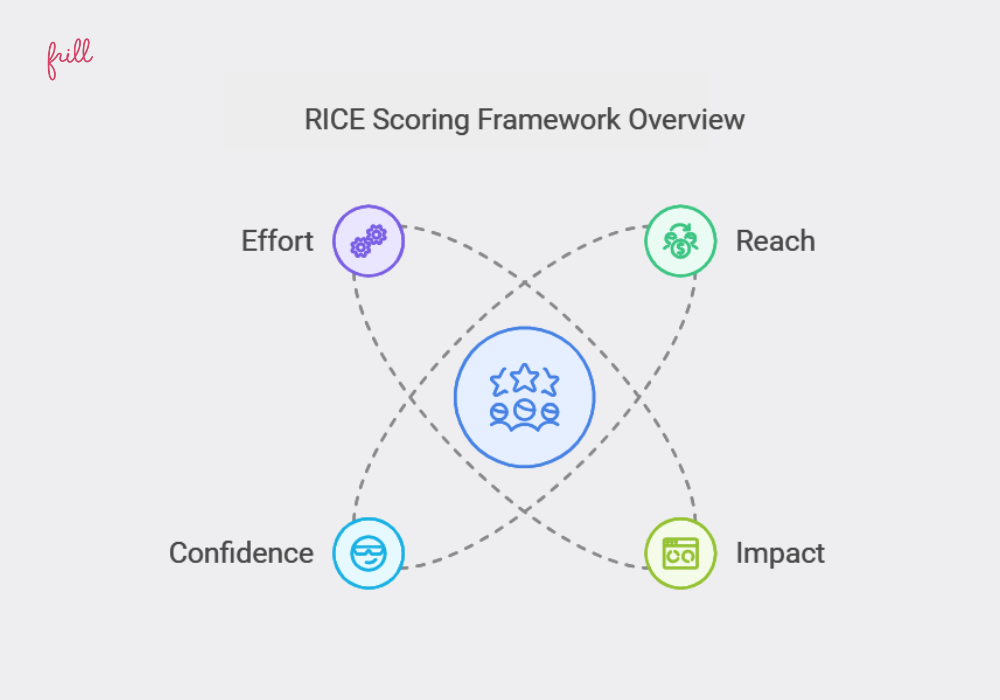
Kano Model: Distinguishes between must-have features, performance-enhancing upgrades, and unexpected delights. It helps prioritize features that create the biggest jump in user satisfaction.
MoSCoW (Must-have, Should-have, Could-have, Won’t-have): A simple way to categorize feedback based on urgency and necessity, helping teams quickly separate critical needs from nice-to-haves.
Weighted Scoring: Assigns numerical values to key criteria like revenue impact, customer demand, and competitive advantage. This framework provides a data-driven approach to prioritization.
Frill’s Priority Matrix: A streamlined, visual framework designed to simplify decision-making by mapping feature requests based on benefit vs. effort, making it easier to identify high-priority tasks.
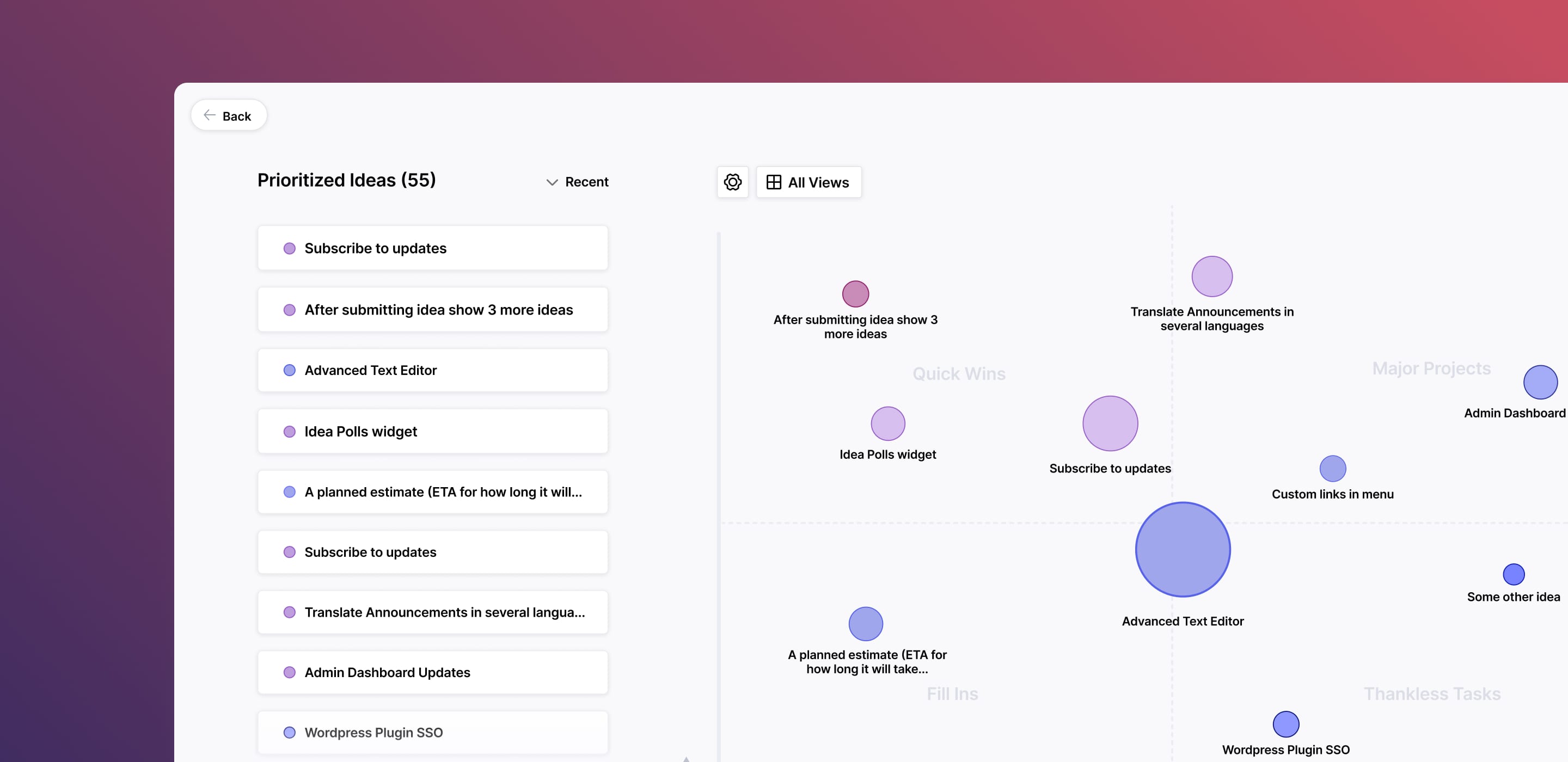
When you apply the right framework, you create a scalable process for feedback-driven product development, without having to drown in a sea of competing requests.
Step 5: Create a workflow to act on prioritized feedback
Prioritization is just the beginning—now it’s time to execute. Without a clear workflow, even the best feedback gets lost in the shuffle. The key is turning prioritized insights into actionable tasks that seamlessly flow into your product development cycle. That means defining ownership, setting deadlines, and ensuring that every piece of feedback has a clear next step. If it’s not in a system, it doesn’t exist.
To move feedback from insights to implementation, you need a structured process:
Capture and categorize feedback
Prioritize using a framework
Convert into product tasks
Assign ownership and deadlines
Track progress and communicate updates
Once feedback is integrated into your product roadmap, transparency is everything. Customers need to know their input matters, and that means closing the loop. Public roadmaps, feature announcements, and direct updates help build trust and engagement. A simple “We heard you—here’s what’s coming” goes a long way in keeping users invested in your product’s evolution.
Step 6: Continuously review and adjust your prioritization process
Prioritization isn’t a “set it and forget it” kind of deal. Customer needs evolve, market conditions shift, and what seemed like a top priority last quarter might not even be relevant today. A strong feedback loop requires ongoing evaluation, ensuring that your team is always focused on the most impactful opportunities. If you’re not continuously reviewing and refining your prioritization process, you’re making product decisions based on outdated assumptions, and that’s a fast track to irrelevance.
To stay ahead, you need a dynamic system that adapts in real time. That means regularly reviewing feedback trends, incorporating new insights from customer behavior, improving user consent management, and adjusting your roadmap accordingly. Your product backlog shouldn’t be a graveyard of old ideas. It should be a living, breathing document that reflects what users actually need now.
Analytics play a crucial role in this process. Track how prioritized features perform post-launch—are they driving engagement, retention, or revenue? If not, it’s time to reassess your scoring criteria and refine your approach. The best teams aren’t just good at prioritization, they’re relentless about optimizing it.
The biggest mistakes teams make when prioritizing customer feedback
Prioritizing customer feedback isn’t just about picking the loudest or most frequent requests—it’s about making strategic product decisions that drive long-term success. Yet, many teams fall into common traps that slow down development, waste resources, and ultimately frustrate both customers and internal stakeholders. Here are some of the biggest mistakes to avoid when prioritizing customer feedback.
Focusing only on the loudest users or short-term wins
It’s easy to get caught up in the most vocal customers—especially if they’re big accounts or power users. But just because a few users are pushing for a feature doesn’t mean it’s what the broader customer base actually needs.
The problem with prioritizing only the loudest voices:
You risk building features that cater to a small subset of users rather than benefiting the majority.
Long-term innovation takes a backseat to quick fixes.
You might end up with a cluttered product that lacks a clear vision.
Instead, take a data-driven approach. Look at feedback patterns across different customer segments, analyze usage data, and ensure your prioritization aligns with your product strategy—not just the most persistent voices.
How internal bias can skew prioritization decisions
Product teams are made up of humans, and humans have biases. Whether it’s confirmation bias (favoring feedback that aligns with existing beliefs) or recency bias (focusing on the latest feedback instead of long-term trends), these unconscious influences can lead to poor decision-making.
Common prioritization biases:
Recency bias: Giving too much weight to the latest feedback instead of looking at historical trends.
Confirmation bias: Prioritizing features that reinforce existing assumptions rather than what users actually need.
Founder’s bias: Building what leadership wants instead of what the market demands.
To avoid this, establish a structured framework—such as RICE or Frill’s Priority Matrix—that applies objective scoring to feedback, ensuring prioritization is based on impact rather than personal opinions.
The danger of overloading roadmaps with low-impact requests
Not every feature request should make it onto your roadmap. One of the biggest mistakes teams make is trying to please everyone, which results in a bloated product with unnecessary features that don’t drive real value.
What happens when you prioritize too many low-impact requests?
Your development team gets bogged down with minor updates instead of high-impact improvements.
The product becomes cluttered and harder to use.
Users see inconsistent updates rather than meaningful advancements.
A roadmap should be a strategic tool, not a dumping ground. Prioritize features that align with company goals, improve customer experience at scale, and create real competitive advantages.
How to avoid these mistakes and prioritize smarter
Instead of falling into these common traps, take a structured approach to feedback prioritization:
Use a prioritization framework: Whether it’s RICE, Kano, or Frill’s Priority Matrix, structure your decisions around impact, effort, and alignment with business goals.
Balance quantitative and qualitative data: Combine customer feedback with product usage data to identify which requests will have the most impact.
Keep your roadmap lean: Focus on high-value features rather than trying to build everything at once.
By avoiding these mistakes, product teams can ensure they’re prioritizing feedback that truly moves the needle—without getting sidetracked by noise.
How to balance customer feedback with product vision
Customer feedback is invaluable, but not every request should shape your roadmap. Prioritizing the wrong features can lead to a bloated, unfocused product that drifts away from your core mission. The best product teams filter feedback strategically, ensuring every new feature aligns with long-term business goals while keeping users engaged.
How to filter feedback and align it with your product strategy:
Align with your core value proposition: If a request doesn’t strengthen your core offering, it’s likely a distraction. To streamline this process, companies often rely on asset management CRM solutions to centralize client feedback and align it with strategic goals.
Prioritize based on business impact: Features that improve retention, reduce churn, or boost revenue should come first.
Consider technical feasibility: Valuable features still need to be practical for your development team to implement.
Assess demand across customer segments: A feature should benefit a broad user base, not just one client.
Stick to your roadmap themes: Focus on updates that fit within your product’s strategic direction.
Your overall product vision matters more than anything. So of course, there will be times when you have to say no to specific requests.
How to say “no” without damaging customer relationships:
Acknowledge the request and thank users for their input.
Explain why it’s not a fit with transparency and reasoning.
Offer alternatives when possible.
Encourage continued feedback
to keep users engaged.
5 best tools for prioritizing customer feedback
The tools you use make a huge difference. Look for a platform that gives you collection and prioritization in one place.
1. Frill
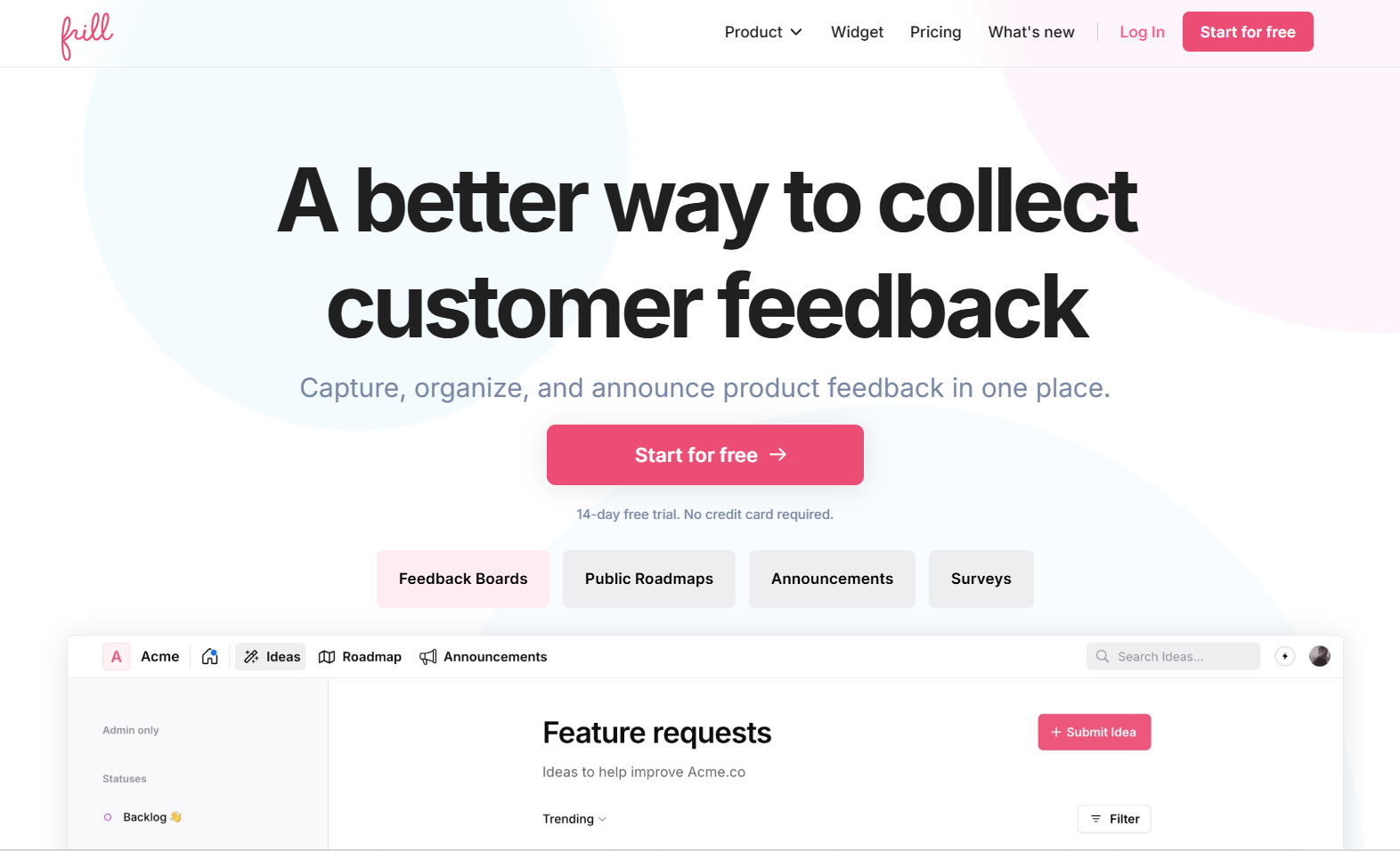
Frill is a simple yet powerful tool designed for SaaS companies to collect, organize, and prioritize customer feedback. It offers an intuitive prioritization matrix that helps teams make data-driven product decisions.
Top features:
Feature request boards
Customizable prioritization matrix
Roadmap management
In-app feedback widgets
Public and private voting options
Integrations with Slack, Intercom, and Jira
2. Mopinion
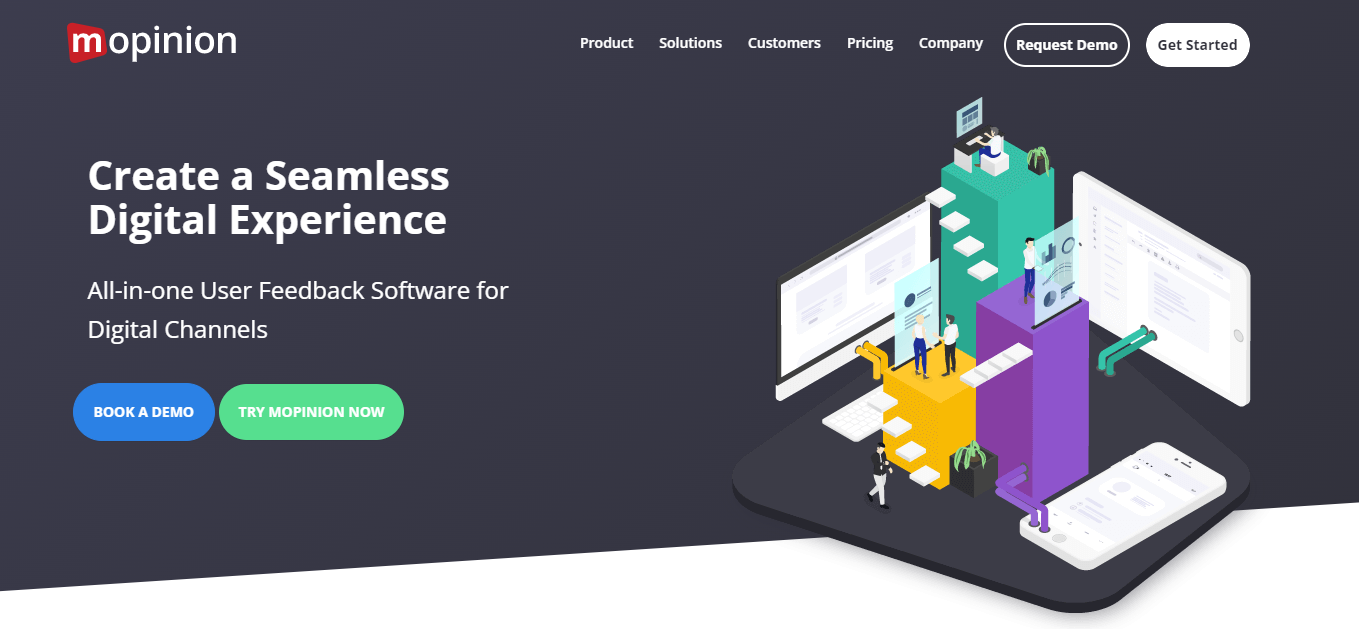
Mopinion is a user feedback and analysis tool that helps businesses gather insights from websites, apps, and email campaigns. It provides sentiment analysis and AI-driven prioritization.
Top features:
Customizable feedback forms
AI-based sentiment analysis
Real-time dashboards and reporting
Feedback tagging and categorization
Integration with CRM and project management tools
3. Productboard
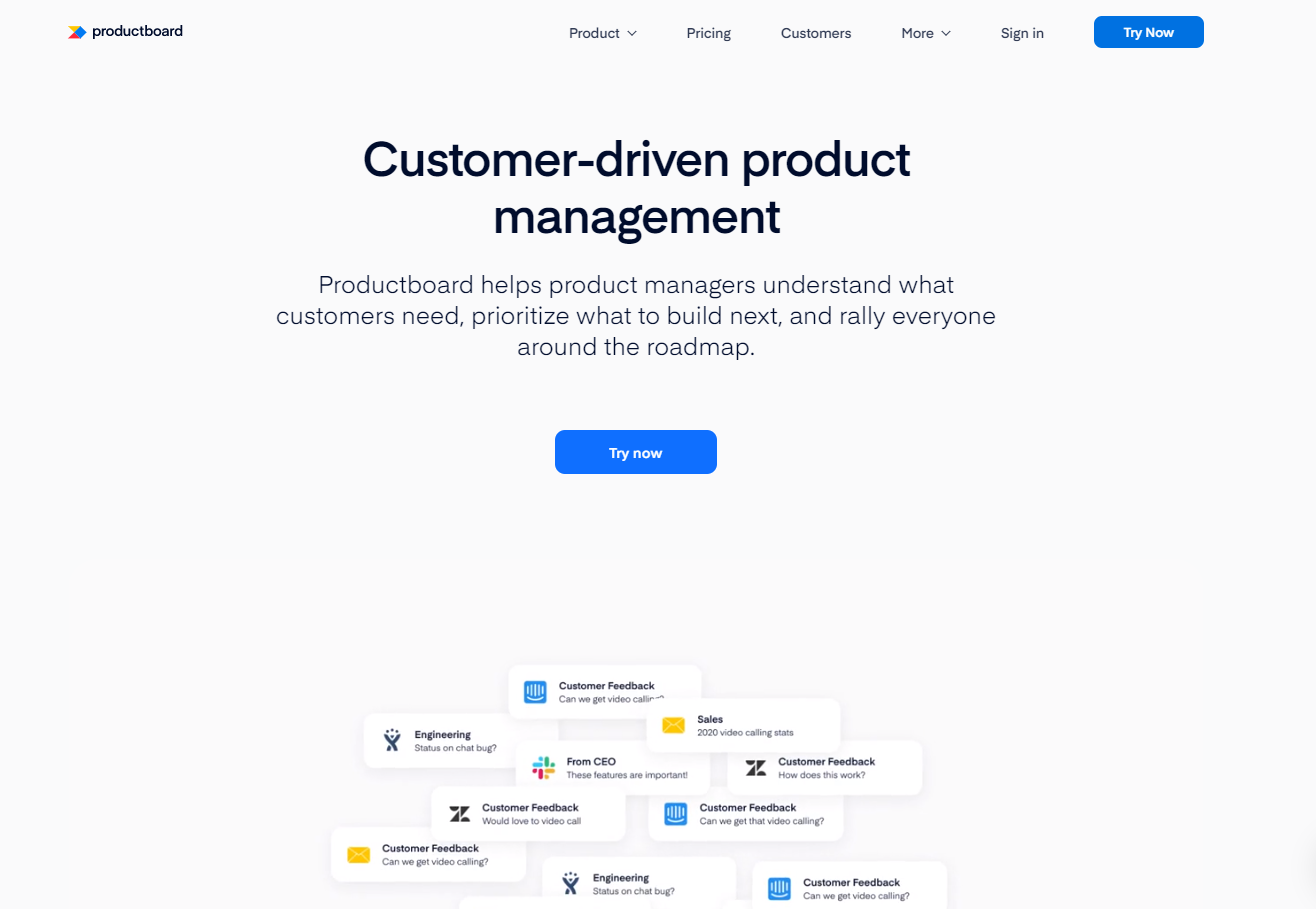
Productboard is a product management platform that centralizes customer feedback and aligns it with business objectives, helping teams prioritize features effectively.
Top features:
Customer feedback repository
Feature scoring and prioritization frameworks
Custom roadmaps and workflow automation
Collaboration tools for cross-functional teams
Integrations with Jira, Slack, and Zendesk
4. Canny
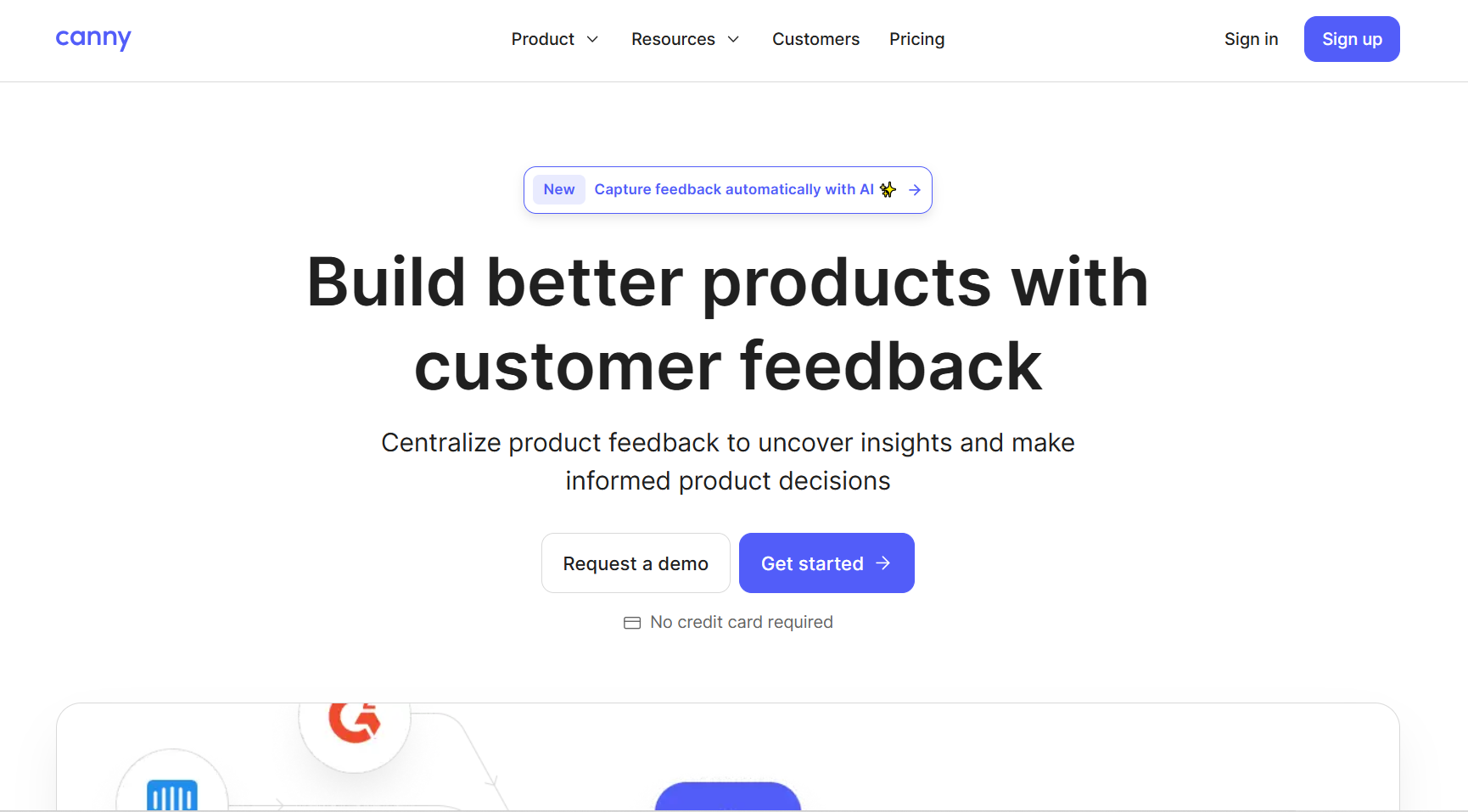
Canny is a feature request tracking tool that enables businesses to collect and prioritize customer feedback while keeping users informed on progress.
Top features:
Public and private feedback boards
Upvoting and commenting system
Feature request impact scoring
Roadmap visualization
Integration with Intercom, Slack, and GitHub
5. Aha!
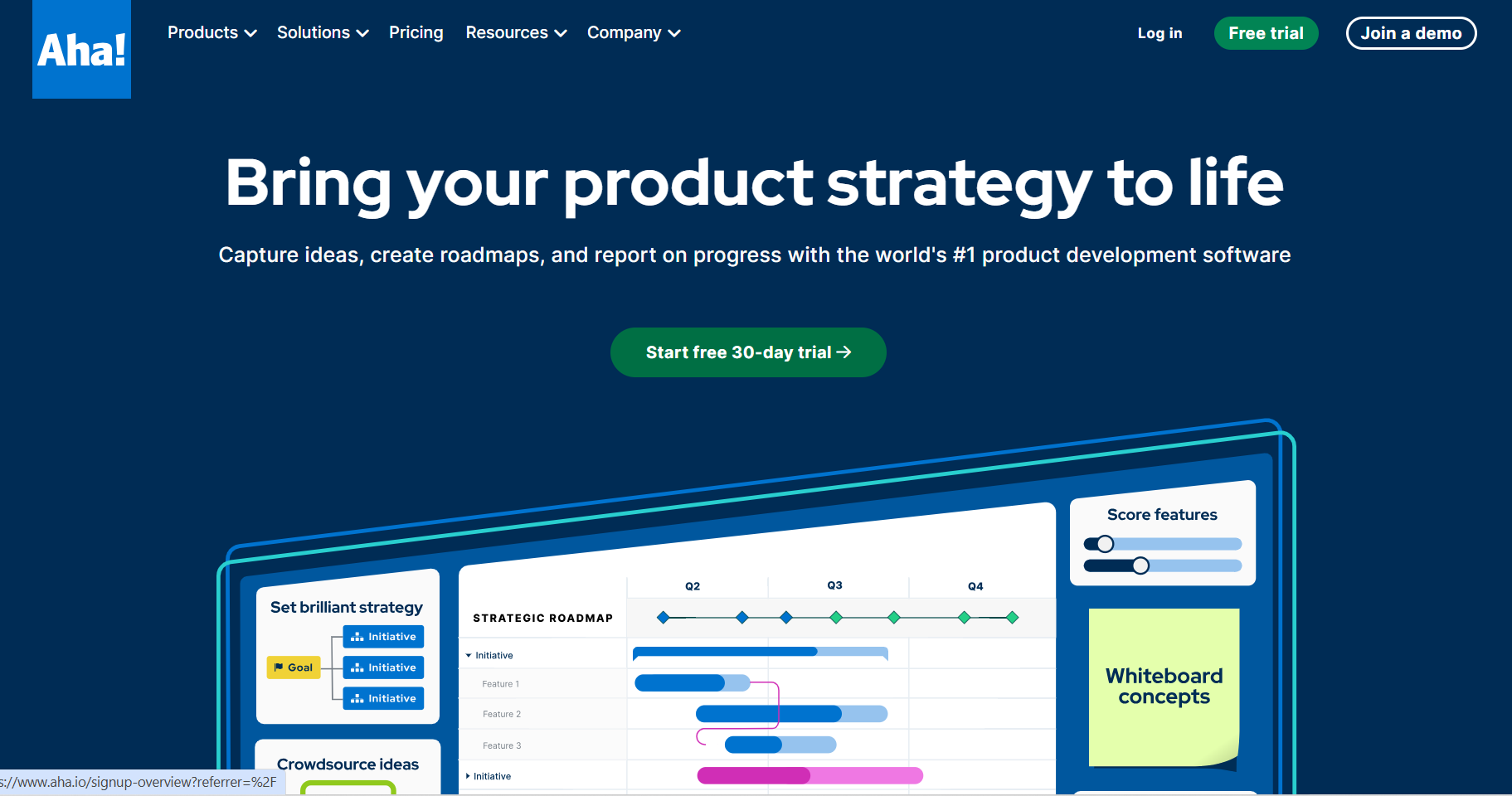
Aha! is a comprehensive product management suite that includes feedback collection, prioritization, and roadmapping tools to help teams build customer-driven products.
Top features:
Centralized idea management
Custom scoring for feature prioritization
Visual roadmap builder
User segmentation and feedback analytics
Integration with development tools like Jira and Azure DevOps
Ready to collect and prioritize feedback in one place? Learn more about Frill.